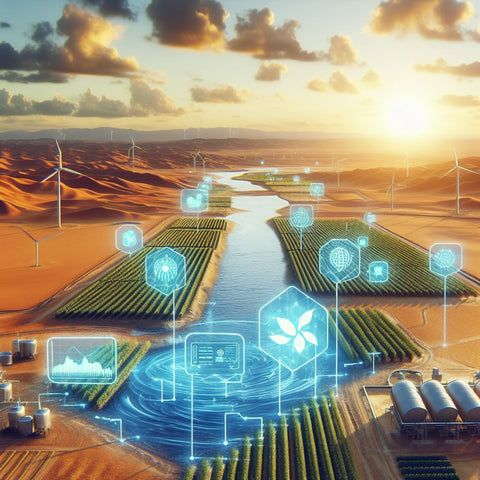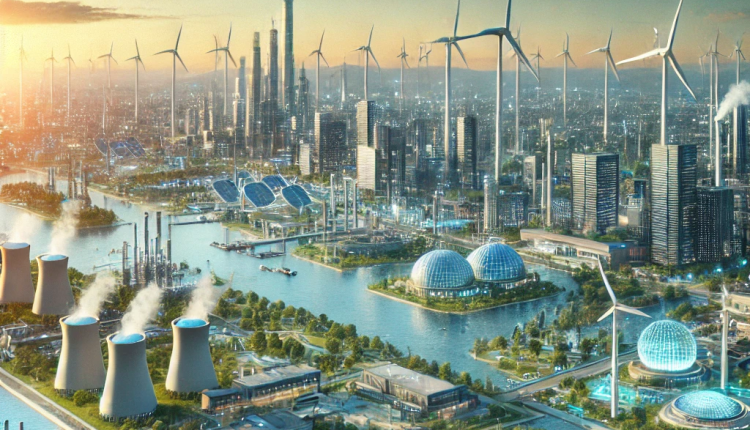The Water-Energy Nexus highlights the interdependence between water and energy. Water is essential for energy production, including cooling systems, hydroelectric generation, and biofuel cultivation, while energy is crucial for water extraction, treatment, and distribution. As global demand for both resources increases and climate change exacerbates scarcity, understanding this interconnection becomes vital for academics, policymakers, and industries working to achieve sustainable development goals (SDGs).
Why the Water-Energy Nexus Matters in 2025
Recent research highlights the growing urgency of addressing the water-energy relationship. According to the International Energy Agency (IEA, 2024), energy production accounts for approximately 10% of global freshwater withdrawals, while the water sector consumes up to 4% of global electricity. Climate-driven droughts and heatwaves further strain this relationship, impacting both resource availability and economic stability.
In 2025, the rise of net-zero energy targets and water scarcity mitigation strategies has propelled the Water-Energy Nexus to the forefront of sustainability research.
Key Intersections of Water and Energy Use
Energy for Water:
• Desalination Plants: Increasingly vital for freshwater in arid regions but energy-intensive. Innovations like solar-powered desalination aim to reduce costs by utilizing renewable energy sources.
• Water Treatment & Distribution: Pumping and treatment processes rely heavily on electricity, accounting for significant municipal energy use.
• Emerging Technologies: AI-driven leak detection systems reduce both energy and water waste by optimizing water usage and preventing leakage.
Role of Water in Energy Production:
- Thermal Power Generation: Large amounts of water are required for cooling in thermal power plants. To address this, dry-cooling systems are emerging as a viable alternative, significantly reducing water dependence.
- Hydropower: While it provides a clean energy source, concerns arise over its ecological impact, particularly in transboundary river systems where water management conflicts can occur.
- Bioenergy Production: The reliance on water-intensive crops sparks debates over food-water-energy trade-offs, highlighting the need for sustainable agricultural practices in energy production.

Case Study: Singapore’s Innovative Water-Energy Integration
Background: Singapore, with limited freshwater resources and a growing population, faces significant water and energy management challenges. To address these, the nation has implemented integrated strategies focusing on technological innovation and resource efficiency.

Key Initiatives:
- NEWater Recycling Program: Transforming wastewater into high-grade reclaimed water helps significantly reduce energy demands previously needed for water importation.
- Desalination Powered by Renewable Energy: Solar energy integration at facilities like the Tuas Desalination Plant lowers both operational costs and carbon footprints.
- Smart Water Grid: Advanced sensors and IoT technology enable real-time monitoring, predictive maintenance, and optimized pumping schedules, ensuring efficient resource management.
Outcomes:
- Energy Savings: Optimized operations and smart grid technologies contribute to a reduction of up to 20% in energy consumption.
- Water Security: By meeting 40% of Singapore’s water demand, NEWater decreases reliance on external sources.
- Environmental Impact: The integration of renewable energy with water management strategies significantly cuts carbon emissions.
Lesson Learned:
Singapore’s holistic approach highlights how combining advanced technology with sustainable planning leads to substantial improvements in water-energy resource management.
Technological Innovations Driving the Nexus
innovative advancements play a pivotal role in addressing the challenges and optimizing the interdependencies of the water-energy nexus. Innovations focus on improving efficiency, reducing environmental impact, and enhancing resilience to climate-induced stresses.

Key Technological Advancements:
- Energy-Efficient Desalination:
- Emerging Trends: Solar-powered desalination plants and membrane distillation techniques are reducing energy use by up to 50% compared to traditional reverse osmosis systems. These systems harness solar power or renewable energy to lower operational costs and environmental impacts.
- Case Example: The Noor Ouarzazate Solar Complex in Morocco integrates solar power with desalination, providing clean water to arid regions while cutting carbon emissions.
- Innovative Water Reuse Technologies:
- Forward osmosis and advanced oxidation processes (AOPs) are making wastewater treatment more energy-efficient by using fewer chemicals and less energy compared to conventional methods.
- Notable Development: Orange County, California’s Groundwater Replenishment System produces potable water from treated wastewater, significantly reducing energy costs compared to traditional water importation.
- Hydropower Innovations:
- Modernization of small-scale hydropower systems and the use of fish-friendly turbines minimize ecological impacts by allowing fish to pass through turbines unharmed while enhancing energy production efficiency.
- Emerging Concept: Pumped storage hydropower integrated with renewable sources offers grid stability with minimal water footprint, storing energy when there’s excess supply and releasing it when needed.
- Floating Solar Farms:
- Placing solar panels on water bodies reduces land use conflicts and curbs water evaporation while generating clean energy. This innovative solution is particularly valuable in areas with limited land space.
- Key Project: The Tengeh Reservoir floating solar farm in Singapore powers water treatment plants, creating a synergistic water-energy solution.
- Energy Recovery from Water Systems:
- Pressure-reducing valves in water distribution networks are being replaced with micro-turbines to generate electricity. These turbines harness the energy from water flowing through the pipes to power local infrastructure.
- Application: Cities like Portland, Oregon, utilize these systems to supplement local power grids, demonstrating a practical solution for urban areas.
Policy & Collaboration:
- Transboundary Cooperation: Shared river basins require international agreements to avoid conflicts.
- Combined Resource Planning: Holistic approaches consider water and energy jointly for infrastructure development.
- Public-Private Partnerships: Foster innovation and resource pooling to address infrastructure gaps.
Achieving SDG 6 (Clean Water) and SDG 7 (Affordable Clean Energy) hinges on effective Water-Energy Nexus strategies.
Conclusion
The Water-Energy Nexus in 2025, stands as a pivotal issue amid growing resource demands and climate-induced stress. For academics and industry experts, understanding this intersection offers pathways to innovation, policy development, and global sustainability. By embracing Merged solutions, we can ensure that water and energy systems remain resilient and equitable for future generations. The Sustainable Water Management and Resource Adaptation conference offers a timely platform for researchers, practitioners, and experts. Learn more here.
What are your thoughts on emerging solutions within the Water-Energy Nexus?



